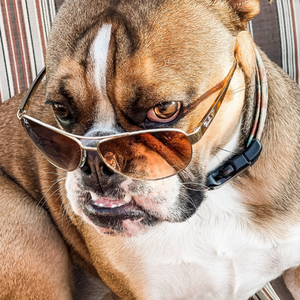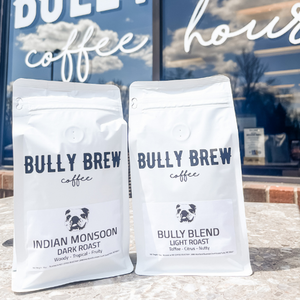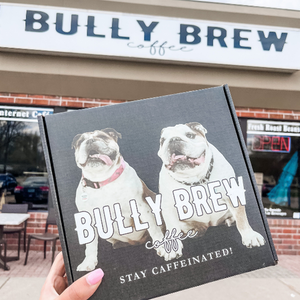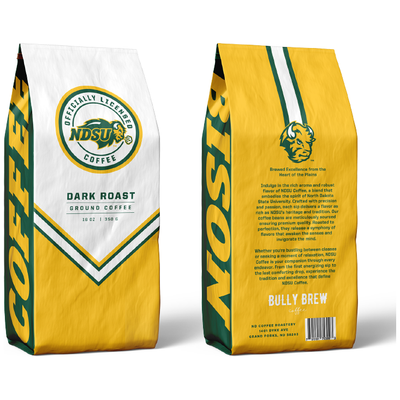Bully Brew Blog
Unveiling the Secret Behind Decaf Coffee
Have you ever wondered where decaffeinated coffee beans come from? There’s not a decaf coffee plant - all coffee beans contain caffeine unless they go through one of the following processes:
Ethyl Acetate (EA): There's a natural substance found in bananas that can also be made when sugars are fermented, called ethyl acetate. This substance can be isolated and used like a cleaner to remove caffeine from green coffee. First, the coffee beans are sorted and exposed to steam for half an hour with low pressure. This opens the tiny pores of the beans so they're ready for the caffeine to be extracted. The beans are then put into a mixture of water and ethyl acetate. The ethyl acetate sticks to certain parts of the beans, pulling the caffeine molecules out. They repeat this process for eight hours, draining and filling the container many times until there's almost no caffeine left. Then the beans are steamed again to get rid of any leftover ethyl acetate. Finally, the coffee beans are dried and cleaned up before they're roasted!
Mountain Water Process (MWP): To take out the caffeine using water, unroasted coffee beans are soaked in a water solution that removes the caffeine. This first step also removes some other things that give the coffee beans their flavor. Once the coffee beans have soaked long enough, the water is run through a special filter that catches the caffeine, but nothing else. The filtered water then contains the flavors of the coffee, but not the caffeine. The water solution is then returned to the coffee beans so the beans can soak up the remaining flavors from the solution. Then the beans are dried up and ready to be roasted!
Methylene Chloride (MC): In this method, the first step is to use hot water to pull the caffeine out, along with some other things that give the coffee beans flavor. Then the beans are removed from the water, and methylene chloride is added. The methylene chloride sticks to the caffeine, but nothing else. Because it doesn't mix with water, the methylene chloride and caffeine combination is easy to pull out of the water. Then, the beans are put back into the water to soak up the flavors again. Finally, the beans are dried so they can be roasted!
Pretty cool, huh?
https://www.cafeimports.com/north-america/blog/decaf-process/





